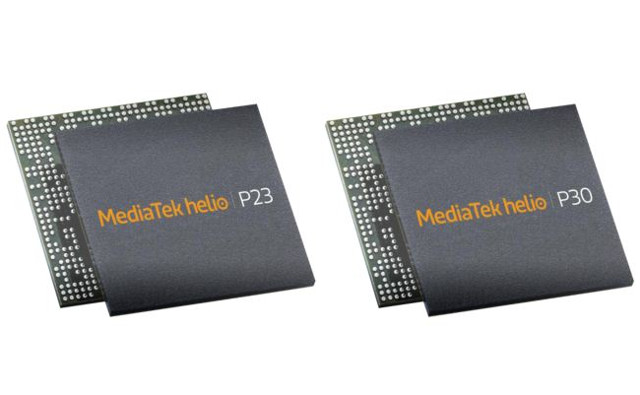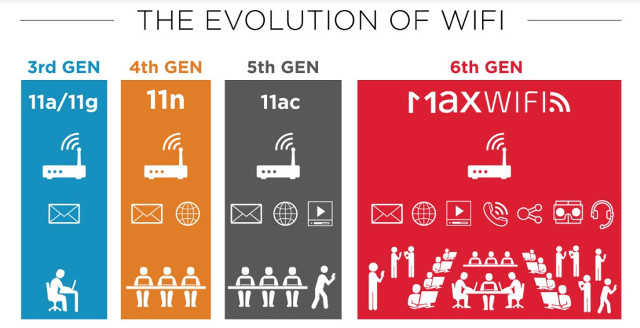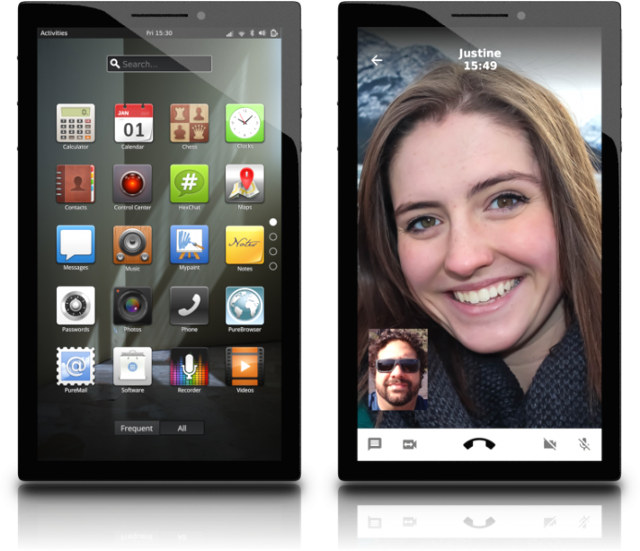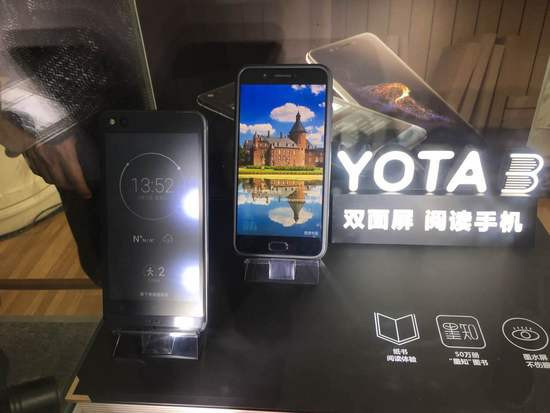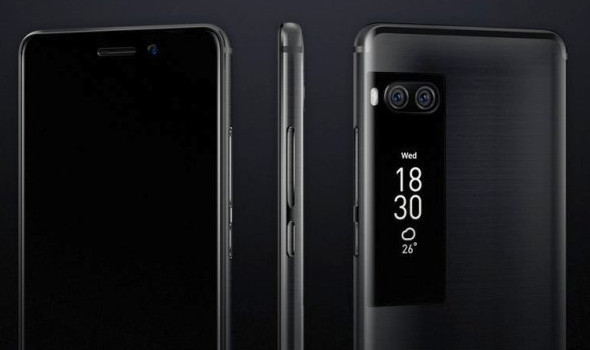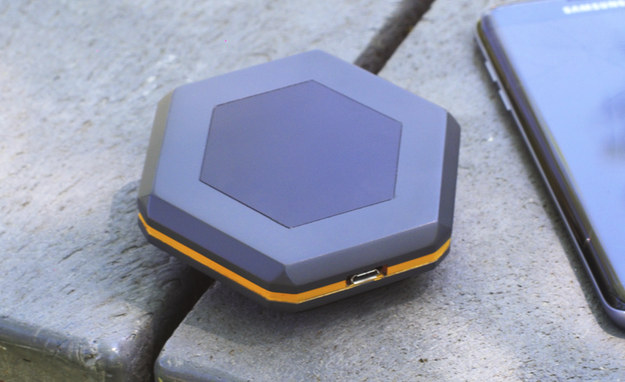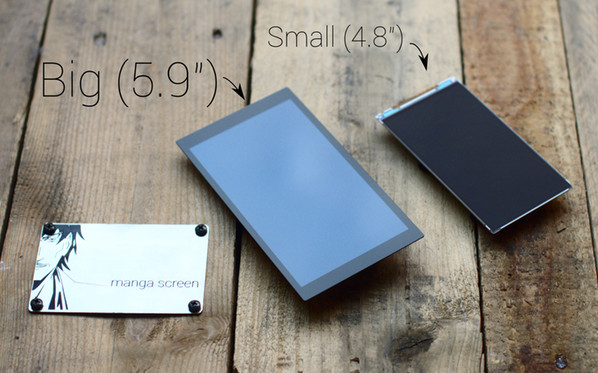MediaTek has introduced two more octa-core Cortex A53 processors with respectively Helio P23 for worldwide markets, and Helio P30 for China. Both processors build upon Helio P20/P25 design, but are upgraded with a faster Mali G71MP2 GPU, LTE Cat 7/13 modem, and in the case of Helio P30 the ability to record 4K videos with H.265 codec, instead of just H.264, and a new “vision processing unit”. Mediatek Helio P23 & P30 specifications: CPU – 8 core big.LITTLE processor with 4x ARM Cortex A53 @ 2.3 GHz, 4x ARM Cortex A53 @ 1.65 GHz GPU – ARM Mali-G71MP2 GPU clocked @ 770 MHz (P23) or 950 MHz (P30) Memory I/F – 2 x 16-bit @ 1600 MHz LPDDR4X, P23 only: 1 x 32-bit @ 933 MHz LPDDR3 Storage I/F – No info Display – Up to 2160 x 1080 resolution Video Encoder – P23: 2160p30 H.264; P30: 2160p30 H.264 & HEVC […]
Broadcom Introduces Three 802.11ax “Max WiFi” Chips: BCM43684, BCM43694 & BCM4375
We’ve already written about the new 802.11ax WiFi standard that promises up to 10 Gbps data rates, support for 2.4 & 5 GHz bands, up to 4x longer range, and better handling of high density scenarios. It appears 802.11ax we’ll be known as Max WiFi to the masses, and Broadcom has unveiled Max WiFi solutions for home and enterprise routers, as well as a smartphones. There are currently three Max WiFi solutions from Broadcom: BCM43684 & BCM43694 4×4 802.11ax chips, respectively optimized for residential and enterprise access points, share the same key features: Support for four streams of 802.11ax 4.8 Gbps PHY rate 160 MHz channel bandwidth 1024 QAM modulation Uplink & downlink OFDMA (Orthogonal Frequency Division Multiple Access) MU-MIMO ZeroWait DFS (Dynamic Frequency Selection) AirIQ interference identification Full compliance to IEEE and WFA 802.11ax specifications BCM4375 smartphone combo chip: Support for 2-streams of 802.11ax Bluetooth 5 including Low-Energy Long […]
Purism Librem 5 Open Source Linux Smartphone Focuses on Privacy (Crowdfunding)
Purism is computer manufacturer founded in 2014 whose mission is to “provide the highest quality hardware available, ensuring the rights of security, privacy, and freedom for all users”, and so far, they’ve delivered several Intel Core i5/i7 laptops running their PureOS Linux distribution based on Debian with an emphasis on privacy protection. The company has now launched a crowdfunding campaign on their own website to develop and manufacture Librem 5 Linux smartphone with the same philosophy. The phone will use open source software even for the GPU, so the company currently selected i.MX6 for the project since they can use etnaviv open source driver for the Vivante GPU, but they hope to switch to the more powerful i.MX8 processor for the final design, which explains why the hardware specifications are not set in stones yet: SoC- NXP i.MX6/i.MX8 CPU with Vivante GPU System Memory – 3GB LPDDR3 Storage – 32GB […]
YotaPhone 3 Dual Screen Smartphone to Launch for $360 and Up (in China)
Russia based Yota makes some unusual phones with dual display with a standard color front display, and an e-paper rear display that allows you to check the time without pressing a button, keeping displaying important information even when your battery is completely discharged, and more. The first Yotaphone was launched in December 2012, followed by a prettier and more powerful Yotaphone 2 in December 2014, but we’ve had to wait nearly three years for the company – with some fresh money and technical involvements from Chinese partners – to introduce YotaPhone 3 at the Russian Embassy in Beijing. The phone is powered by a Qualcomm Snapdragon 625 processor, and features a 5.5″ super AMOLED display on the front, and a 5.2″ E-Ink display on the back. Yotaphone 3 preliminary (& partial) specifications: SoC – Qualcomm Snapdragon 625 octa-core Cortex A53 processor @ up to 2.0 GHz with Adreno 506 GPU System […]
Android 8.0 Oreo Launched, OS Images, and AOSP Source Code Released
Google has now formally announced Android O version and name: Android 8.0 Oreo. We already had seen the new Features in Android O-reo during the first preview release with picture-in-picture support, autofill APIs, adaptive icons and so on. There’s also a new Android Oreo character… If you want to run the latest Android 8.0 on your device, you can do so on Nexus 5X, Nexus 6P, Nexus Player, Pixel C, Pixel, and Pixel XL by getting the firmware in the download page, unless you are enrolled in Android Beta Program in which case you should receive it automatically. What I did not see (yet) is a joint announcement for a new Android 8.0 phone like last year LG V20 smartphone with Android 7.0, and Google simply said that “by the end of this year, hardware makers including Essential, General Mobile, HMD Global Home of Nokia Phones, Huawei, HTC, Kyocera, LG, […]
Meizu Pro 7 is a Dual Camera Dual Display Android Smartphone
Smartphones with dual rear cameras are becoming more common, and we’ve see some smartphones in the past with an extra rear display such as Yotaphone 2. Meizu Pro 7 and Pro 7 Plus smartphones combines both features, but instead of using an E-Ink or other e-Paper display for the secondary display, Meizu used an 1.9″ AMOLED display that automatically turns on when you flip the phone, and can be used to check the time or notifications while the main display is still off. Meizu Pro 7 / Pro 7 Plus partial specifications: SoC – Mediatek Helio X30 deca-core processor with 2x cortex A73 cores @ up to 2.6 GHz, 4x cortex A53 cores @ up to 2.2 GHz, and 4x cortex A35 cores @ up to 2.0 GHz, as well as Imagination PowerVR 7XT GPU System Memory Pro 7 – 4GB LPDDR4x Pro 7 Plus – 6GB LPDDR4x Storage Pro […]
Sonnet is a Rugged Portable Device Creating Mesh Networks for Smartphones
Cellular networks are available in most places, but not always, and you may not have connectivity while climbing mountains or other remote locations, when going abroad, during natural disaster, in very crowded places where network capacity is exceeded, or when your government decides to cut it off for “national stability and harmony”. Wouldn’t it be great if you were still able to contact with your friend in such cases, and create your own mesh networks expanding over several kilometers? That’s exactly what Sonnet does by connecting to your smartphone over WiFi, and to other Sonnet nodes over ISM frequencies (433, 868 and 925 MHz). Sonnet hardware specifications: Connectivity 802.11 b/g/n WiFi with up to 20 dBm (max varies per country); WPA/WPA2 security Long Range RF Frequencies 915 MHz (North America) 868 MHz (Europe) 433 MHz (Asia Pacific) Distance – 5km typ.; up to 10km Line-of-sight; SMA connector available to extend […]
Manga Screen 2 is Smartphone Touchscreen Display with USB and HDMI Ports for Makers (Crowdfunding)
Most touchscreen displays aimed to be connected to a development board work through a display interface such as MIPI DSI or LCD RGB (and USB or I2C for touch support), and come with somewhat low resolution such as 800×480 which can be suitable for HMI applications. They also often don’t work with all boards due to the different interfaces used, and there’s no way to easily connect such small display to your computer. Taking those limitations into account, and since most boards and computers come with HDMI and USB ports, Elias Bakken and his team have added HDMI and USB ports to two smartphone displays, and Manga Screen 2 was born. The two displays – made by Sharp – have the following hardware specifications: Big (5.9”) Small (4.8”) Resolution 1920×1080 1280×720 FPS (max) 60 57 Color mode 24-bit PPI 376.2 307.9 Brightness 400 cd/m2 500 cd/m2 Contrast ratio 1000:1 800:1 […]


